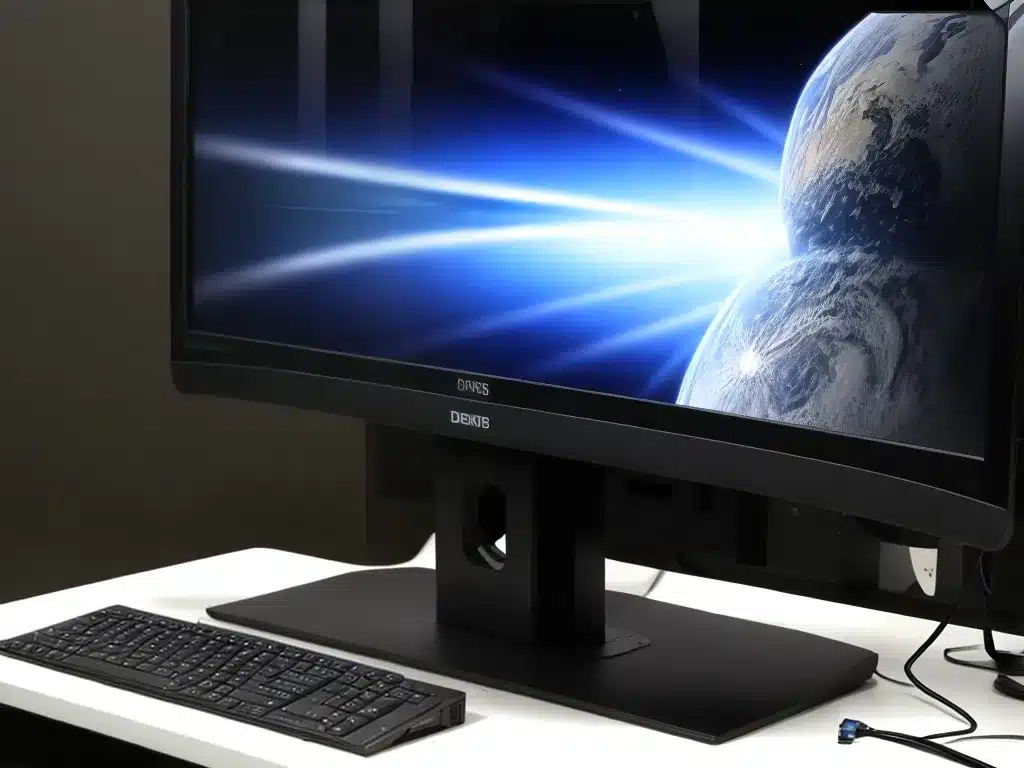
Having no display on your desktop PC can be frustrating. However, there are several troubleshooting steps you can try to get your display working again. Here is an in-depth guide on solving no display issues on desktop PCs.
Basic Troubleshooting
When your desktop PC turns on but nothing displays on the monitor, start with some basic troubleshooting steps:
Check Connections
Carefully check that the monitor cable is properly plugged into the back of the computer and the monitor. Try a different video cable if you have a spare one available. Also inspect the cable and connectors for any damage or bent pins.
Verify Input Source
Use the monitor’s menus to make sure the input source is set correctly, such as HDMI, DisplayPort, DVI, or VGA depending on your video connection. The input may have been accidentally changed.
Try a Different Monitor
Connect a different external monitor or TV to your PC if you have access to one. This will help rule out a faulty monitor.
Test Components
Remove all non-essential components and peripherals. Only have the core PC components connected like the motherboard, CPU, RAM, graphics card (if discrete), power supply, and monitor. This simplifies troubleshooting.
Reset CMOS
Resetting the CMOS (complementary metal-oxide semiconductor) battery on the motherboard clears any corrupted BIOS settings that may be preventing a signal to the monitor. Your motherboard manual will show the CMOS reset steps.
Advanced Troubleshooting
If basic steps don’t uncover the issue, try some more advanced troubleshooting techniques:
Boot Into Safe Mode
Windows Safe Mode loads only the essential drivers and software. Booting into Safe Mode may allow Windows to load properly and output a video signal. Repeatedly press F8 right after turning on the PC to access the Safe Mode menu.
Update BIOS, Chipset, and Graphics Drivers
Outdated motherboard firmware or corrupted drivers can disrupt the video signal. Update to the latest BIOS, chipset, and graphics card drivers from your manufacturer’s website. Use integrated graphics if available to install updates.
Test With Another Graphics Card
If you have another graphics card available, swap it into the PC to test output. If the display works with another card, it points to a failure of the original graphics card.
Check Event Viewer
Event Viewer in Windows logs system events like hardware and driver errors. Critical errors logged around the timeframe of display issues may reveal their cause.
Examine Capacitors
Bulging, leaking, or burst capacitors on the motherboard or graphics card can cause signal disruption. Visually inspect capacitors for any signs of failure.
Attempt a Clean Boot
Perform a clean boot in Windows, which disables all third-party applications from loading at startup. This isolates software conflicts. If the display works normally, an app is likely causing problems.
Reset the Graphics Card
As a last resort, remove the graphics card from the PC, erase any leftover drivers with display driver uninstallers, and firmly reseat the card. Be sure power connectors are properly plugged in.
Performing methodical troubleshooting and testing hardware will often uncover no display issues. For difficult problems, assistance from a PC technician may be needed. Back up critical data first in case hardware like the motherboard, graphics card, or CPU needs replacement. With patience and care, your desktop PC’s display can be restored.












